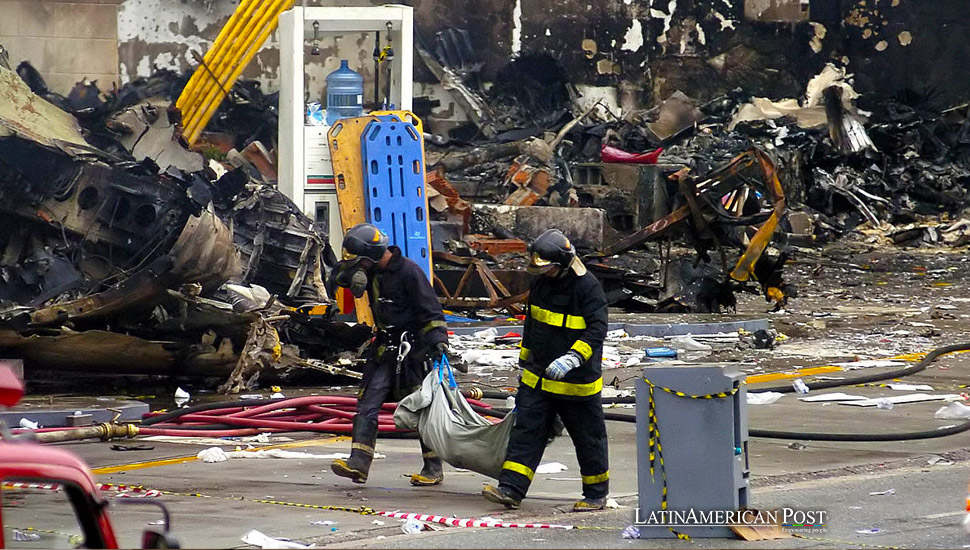Culture of Chaos: The Untold Story Behind Latin America’s Deadliest Airline Disaster

The crash of TAM Airlines Flight 3054 in São Paulo, Brazil, remains the deadliest airline accident in Latin American history. Behind the tragedy lies a chaotic aviation system struggling under pressure, ultimately leading to 199 deaths and unanswered questions.
As Brazil probes the recent ATR-72 aircraft from local carrier Voepass crash and awaits the final report to understand and avoid what went wrong, the details of Latin America’s deadliest aviation disaster cannot be overlooked. Learning from past mistakes is critical to ensuring safer air travel. On July 17, 2007, Brazil witnessed the deadliest airline disaster in Latin American history when TAM Airlines Flight 3054 crashed after attempting to land at São Paulo’s Congonhas Airport. The Airbus A320 overshot the runway and careened into a gas station and TAM Airlines’ office building, killing all 187 passengers and crew aboard, along with 12 people on the ground. This catastrophic event sent shockwaves through Brazil and beyond, highlighting the country’s precarious nature of air travel.
The accident sent shockwaves through Brazil and exposed the vulnerabilities of the country’s aviation system. While the plane’s inability to stop on the rain-slicked runway raised questions about pilot error and safety protocols, investigators soon realized that this disaster resulted from deeper, long-standing issues. It wasn’t just a mistake in the cockpit—it was a culmination of years of mismanagement, infrastructure shortcomings, and an overwhelmed air traffic system. This highlighted the need for the aviation industry to learn from its past and prioritize safety to prevent future tragedies.
The plane’s inability to stop on the rain-slicked runway raised immediate questions about safety protocols and pilot error. Still, the true causes of the crash were buried in the complexities of a chaotic aviation system that had been pushed to its limits. As investigators began to piece together the sequence of events, it became clear that the crash resulted from pilot error and a culmination of systemic failures—failures plaguing Brazil’s troubled air traffic network for years.
Chaos in Brazil’s Air Travel System
The crash of TAM Flight 3054 did not occur in isolation. It was the grim crescendo of turmoil in Brazilian aviation that had been reeling since 2006. A year earlier, a midair collision between a Gol Airlines Boeing 737 and a business jet over the Amazon rainforest killed 154 people, plunging the country into an aviation crisis. The incident revealed severe flaws in Brazil’s air traffic control system, including outdated technology, undertrained personnel, and mismanagement by the military, which still oversaw air traffic operations.
In response to the global disaster, Brazil’s air traffic controllers staged a work slowdown to protest their working conditions, further exacerbating the problem. The ensuing chaos saw thousands of flights delayed or canceled, with airports across the country descending into pandemonium. By the time 2007 rolled around, passenger trust in the aviation industry had all but evaporated, and the country’s infrastructure struggled to keep up with the soaring demand for air travel. Within this pressure cooker environment, the stage was set for disaster.
Congonhas Airport: A Disaster Waiting to Happen
São Paulo’s Congonhas Airport, where TAM 3054 crashed, was infamous for its short runway, precarious location, and poor maintenance. Built in 1936, the airport was initially far from the city center. However, as São Paulo rapidly expanded, the urban sprawl enveloped the airport, making it one of South America’s busiest air travel hubs. By 2007, Congonhas was handling more flights than ever designed for, with nearly 50% overcapacity.
The runway at Congonhas was notoriously short, at just 1,900 meters, leaving little room for error, particularly when wet. Another aircraft slid off the runway the day before the TAM 3054 crash, underscoring the difficult conditions. While Congonhas had recently undergone resurfacing to improve traction, critical drainage grooves had not yet been carved into the runway, making it dangerous during rainfall. Despite these known hazards, the airport remained operational, with thousands of passengers relying on it daily. This culture of chaos and neglect would soon culminate in tragedy.
The 2007 crash was a tragic fulfillment of long-held fears. Congonhas Airport’s central location in a bustling metropolis and its logistical importance in Brazil’s domestic air network meant that any reduction in its capacity was economically unthinkable. Yet, its infrastructure had fallen behind modern safety standards. Unlike other major international airports, which are often surrounded by buffer zones or have extensive runways with safety areas at both ends, Congonhas was hemmed in by densely packed residential buildings, commercial zones, and roads. As a result, any accident involving an aircraft that overshot or veered off the runway was likely to result in carnage, not just for those onboard but for people on the ground.
Despite these known risks, airlines and authorities continued to operate at Congonhas Airport under the pressures of economic necessity. The sheer volume of traffic at the airport forced everyone involved to accept the risks as part of doing business, even though the potential consequences were well understood. The crash of TAM Flight 3054, which devastated not just the passengers and crew but also bystanders on the ground, was the horrifying result of this negligence.
A Recipe for Disaster
As investigators delved deeper into the circumstances surrounding the crash, it became clear that there were multiple opportunities to prevent the disaster. One of the most critical oversights was the failure to address the risk posed by the inoperative thrust reverser. Although it was legal to fly with one reverser disabled, the added stopping distance required should have given pause, especially considering Congonhas’s already short runway and slippery conditions. Yet, the airline allowed the plane to operate without addressing this critical limitation.
The investigation revealed that Captain Henrique Stefanini Di Sacco had reverted to an outdated procedure when landing with one inoperative thrust reverser. This decision, made under the immense stress of landing at one of Brazil’s most dangerous airports, resulted in a fatal mistake: the right engine was left at climb power while the left engine’s thrust reverser engaged. This asymmetry caused the plane to accelerate when it should have slowed down, preventing the proper deployment of spoilers and auto brakes. Unaware of the error, the pilots fought to stop the plane in vain.
In addition, the absence of a specific warning system for thrust lever misconfiguration on TAM’s A320 fleet was another factor that could have averted the tragedy. Airbus had made the technology available following similar incidents, but it was not mandatory, and TAM had opted not to install it, likely to save costs. This decision, in hindsight, was one of many cost-cutting measures that contributed to the airline’s failure to prioritize safety over efficiency.
Lessons Unlearned
The crash of TAM Flight 3054 remains a painful reminder of the consequences of neglecting safety in favor of profit and expediency. While some reforms were implemented in the aftermath of the disaster—such as improvements to runway surfaces and installing arrestor beds at Congonhas Airport—the structural problems in Brazil’s aviation system were far from fully addressed.
In many ways, the crash warned Latin America and the global aviation industry about the dangers of allowing infrastructure and safety protocols to lag behind demand. For a time, Brazil’s aviation industry appeared to take this lesson to heart, as there have been no significant airline disasters in the country since. However, the over-reliance on aging infrastructure, coupled with economic pressures, continues to stress the system.
Even today, the legacy of TAM 3054 hangs over Congonhas Airport, which remains in operation despite its ongoing limitations. For the families of the victims, the reforms that followed were too little, too late. The disaster exposed the precarious balance between economic growth and safety, which had long been tipped too far in the wrong direction.
Also read: Exploring Latin America’s Architectural Gems: Past Meets Present
As Brazil’s aviation industry looks to the future, the lessons of TAM 3054 must not be forgotten. The crash serves as a tragic case study of the dangers of overlooking safety fundamentals in pursuing expansion and profit. Only by remembering the cost of chaos can the industry ensure that such a disaster never happens again.





